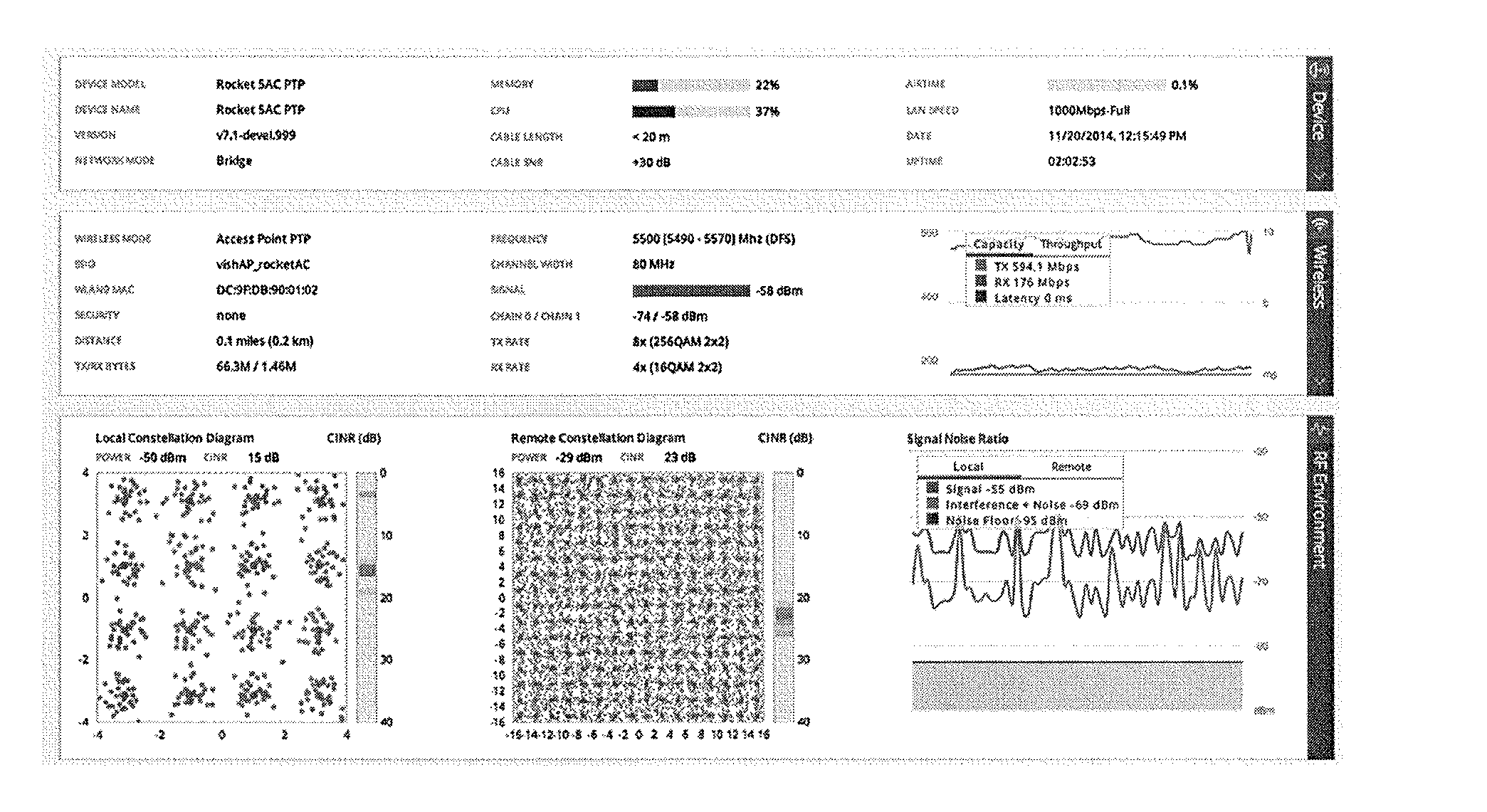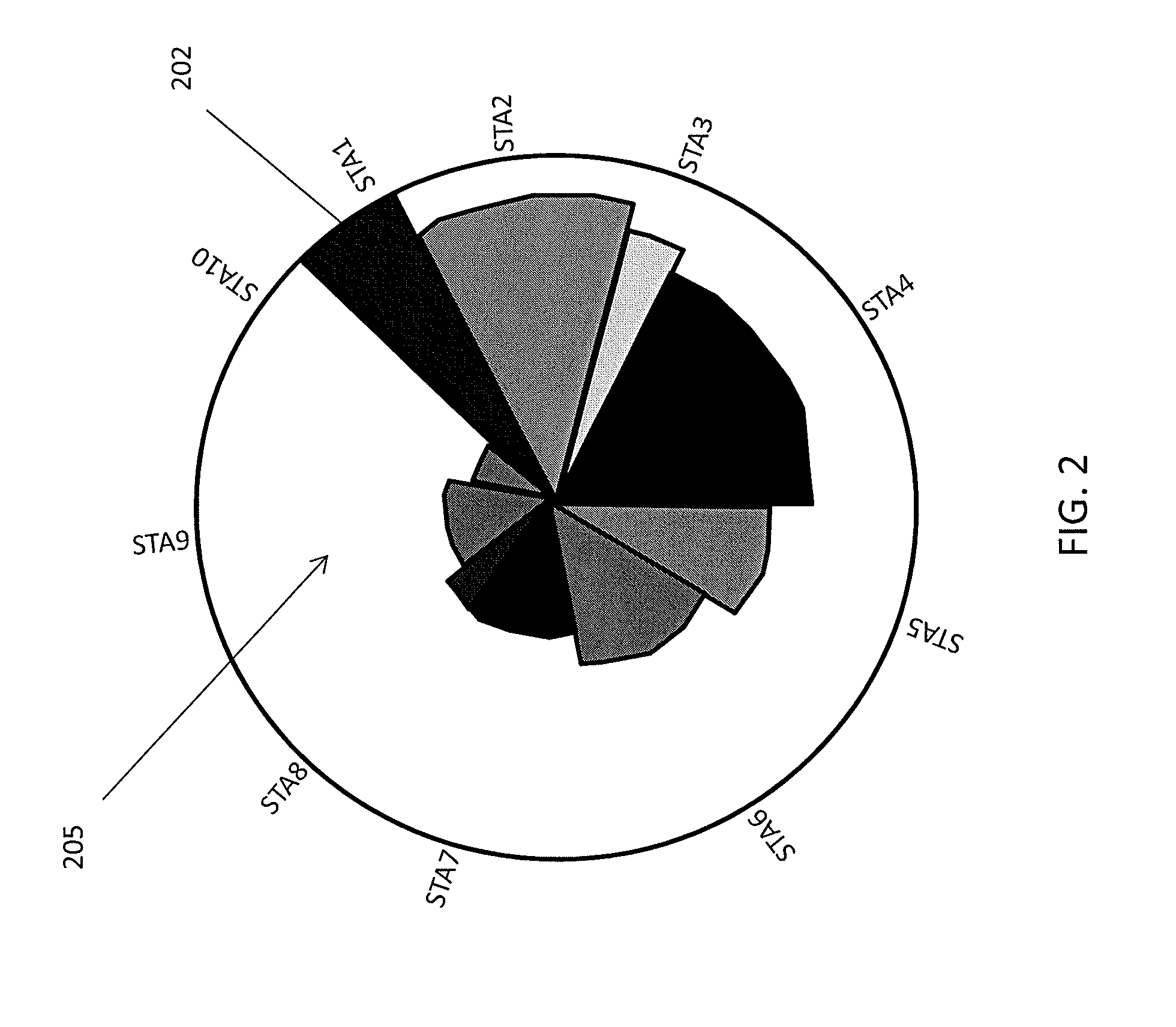Methods and apparatuses for graphically indicating station efficiency and pseudo-dynamic error vector magnitude information for a network of wireless stations
iciency information technology, applied in the field of methods and apparatuses for graphically indicating station efficiency and pseudo-dynamic error vector magnitude information for a network of wireless stations, can solve the problems of not providing overall diagnostic health indicators, difficult to manage the demands on the network made by various stations, and burden on wireless service providers to implement network data optimization. to achieve the effect of optimizing channel frequency (and/or bandwidth)
- Summary
- Abstract
- Description
- Claims
- Application Information
AI Technical Summary
Benefits of technology
Problems solved by technology
Method used
Image
Examples
example
[0194]The techniques described herein typically relate to time division multiple access (TDMA). TDMA may refer to a channel access method for shared medium networks that allows several users to share the same frequency channel by dividing the signal into different time slots. For example, users may transmit in rapid succession, one after the other, each using its own time slot. This may allow multiple stations to share the same transmission medium (e.g. radio frequency channel) while using only a part of the channel capacity. As a simplified example, if TDMA were a party, and there were three guests, Alice, Bob, and Carol talking to the host, each guest may share time talking with the host. For example, for the first 10 seconds, Alice may talk to the host, for the next 10 seconds, its Bob's turn to talk to the host, for the next 10 seconds, its Carol's turn to talk to the host, then for the next 10 seconds, back to Alice, then Bob, and so on. Thus, the frequency-range that is being ...
PUM
 Login to View More
Login to View More Abstract
Description
Claims
Application Information
 Login to View More
Login to View More - R&D
- Intellectual Property
- Life Sciences
- Materials
- Tech Scout
- Unparalleled Data Quality
- Higher Quality Content
- 60% Fewer Hallucinations
Browse by: Latest US Patents, China's latest patents, Technical Efficacy Thesaurus, Application Domain, Technology Topic, Popular Technical Reports.
© 2025 PatSnap. All rights reserved.Legal|Privacy policy|Modern Slavery Act Transparency Statement|Sitemap|About US| Contact US: help@patsnap.com



